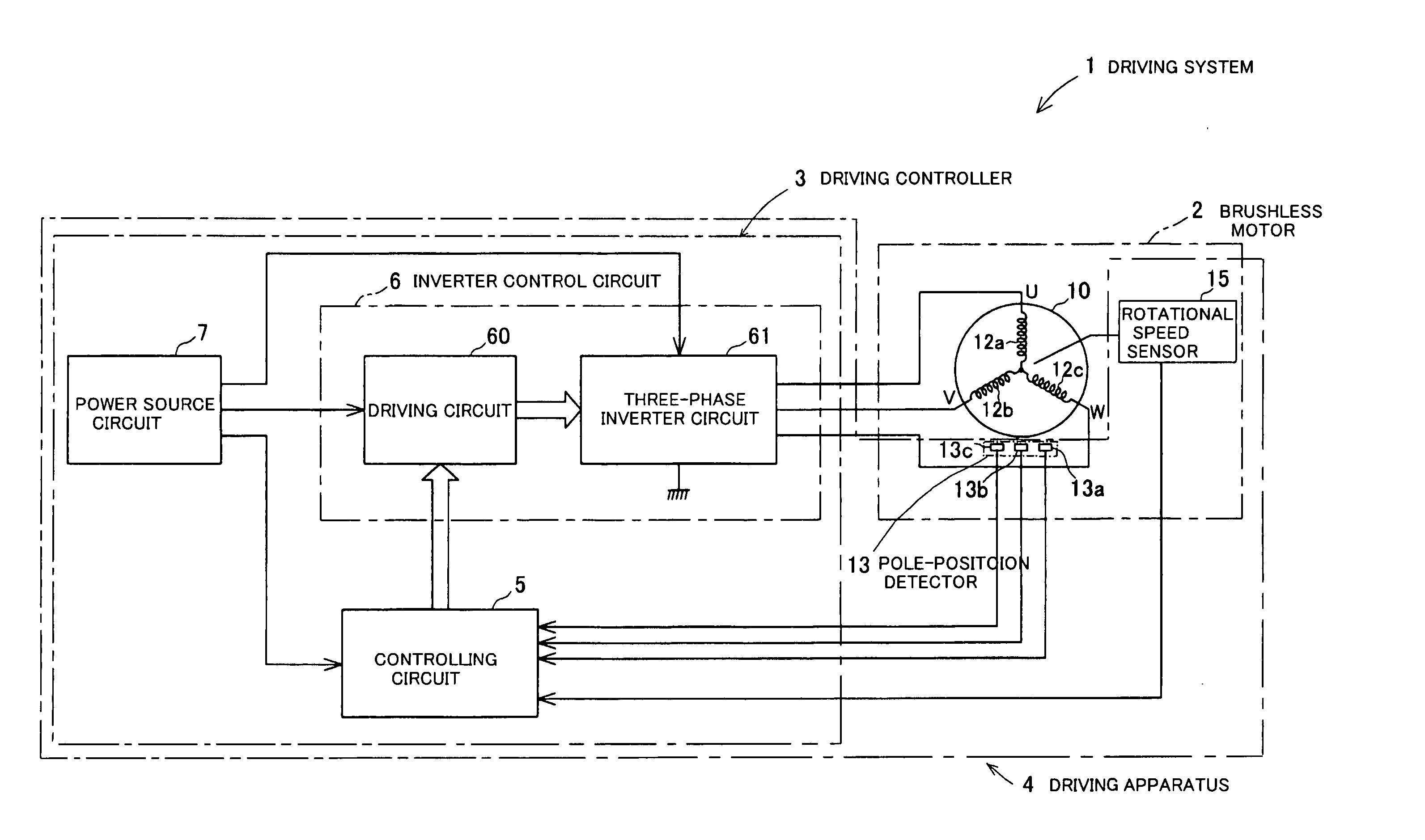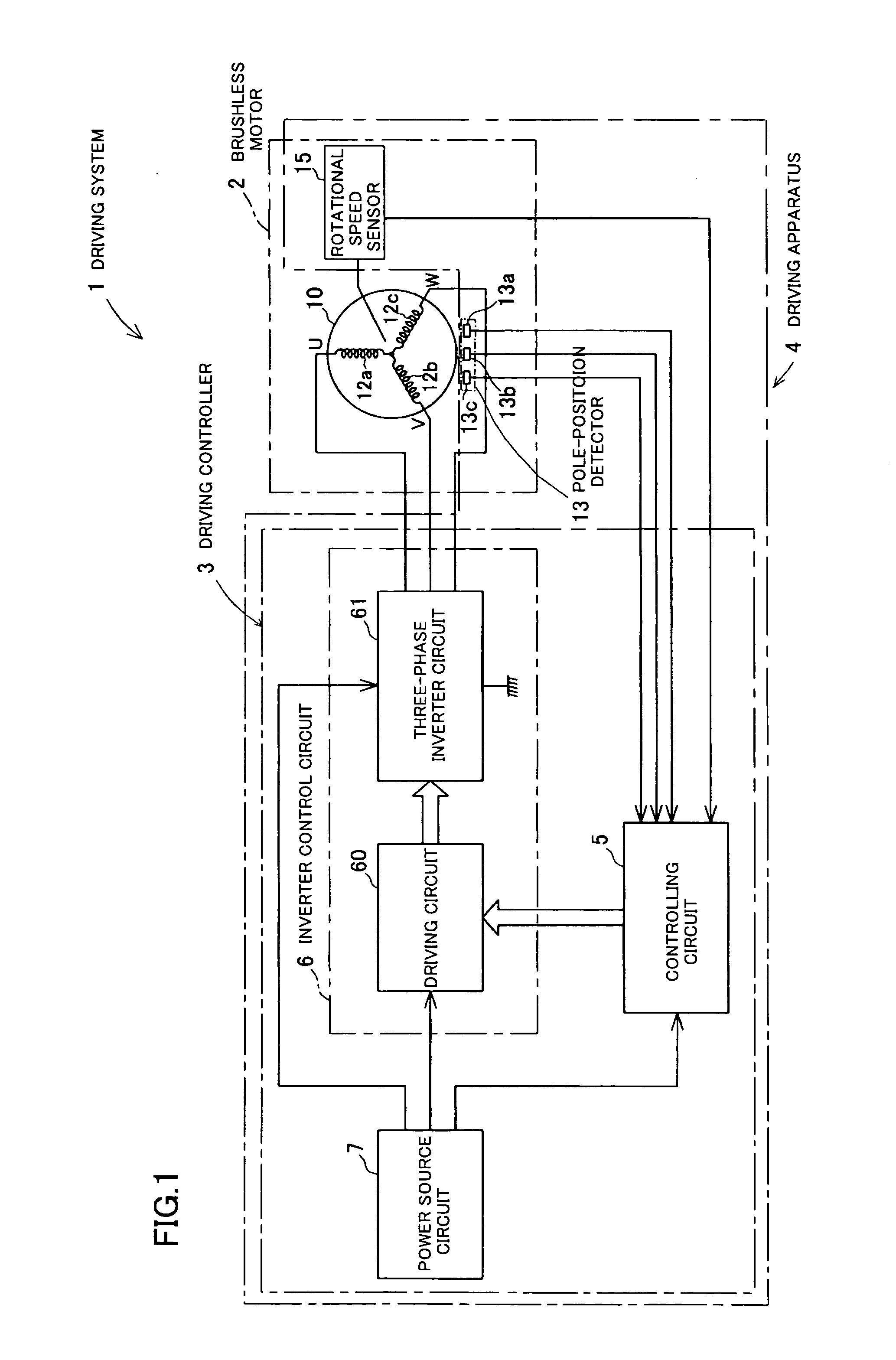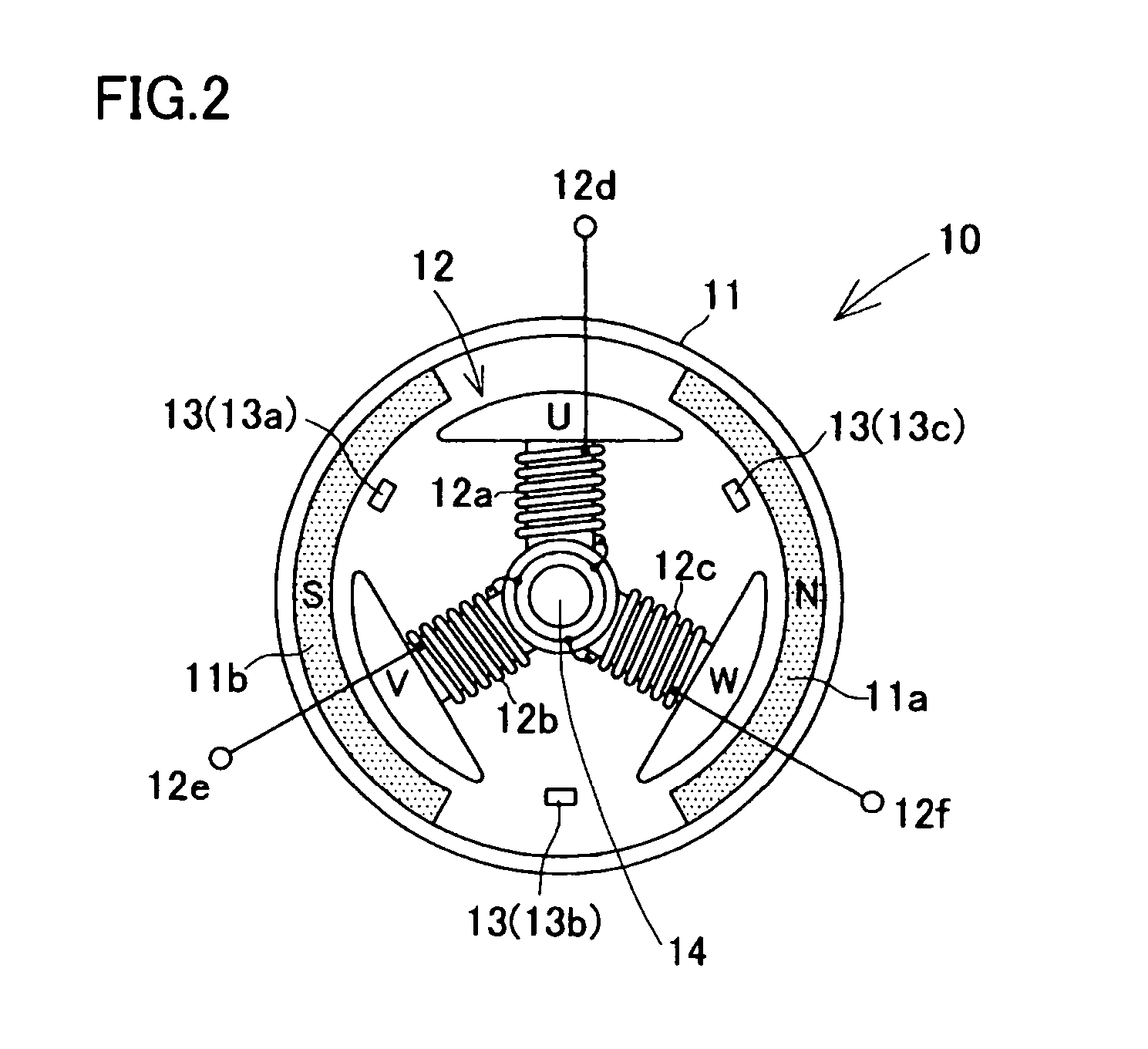Driving apparatus for driving a brushless motor
a technology of driving apparatus and motor, which is applied in the direction of motor/generator/converter stopper, dynamo-electric converter control, stopping arrangement, etc., can solve the problems of remarkable increase of electrical current and unstable stop position, and achieve smooth reduction of rotational speed, little vibration, and little power dissipation
- Summary
- Abstract
- Description
- Claims
- Application Information
AI Technical Summary
Benefits of technology
Problems solved by technology
Method used
Image
Examples
Embodiment Construction
[0067] Now, a preferred embodiment of the present invention will be described below, making reference to the accompanying drawings. First, a structure relating to the rotation control of the brushless motor and a method thereof, and then, a structure relating to the braking control of the present invention and a method thereof are described in detail.
[0068] Referring to FIG. 1, a driving system 1 for driving a brushless motor relating to the embodiment consists essentially of a brushless motor 2 and a driving controller 3 for the motor. The driving controller 3 comprises a controlling circuit 5, an inverter control circuit 6 and a power source circuit 7. The brushless motor 2 comprises a motor body 10, a pole-position detector 13 and a rotational speed sensor (viz. a rotational speed sensing means) 15. Describing in detail, the driving system 1 includes a driving apparatus 4 involving the pole-position detector 13 and the rotational speed sensor 15 of the brushless motor 2 and the ...
PUM
 Login to View More
Login to View More Abstract
Description
Claims
Application Information
 Login to View More
Login to View More - R&D
- Intellectual Property
- Life Sciences
- Materials
- Tech Scout
- Unparalleled Data Quality
- Higher Quality Content
- 60% Fewer Hallucinations
Browse by: Latest US Patents, China's latest patents, Technical Efficacy Thesaurus, Application Domain, Technology Topic, Popular Technical Reports.
© 2025 PatSnap. All rights reserved.Legal|Privacy policy|Modern Slavery Act Transparency Statement|Sitemap|About US| Contact US: help@patsnap.com



